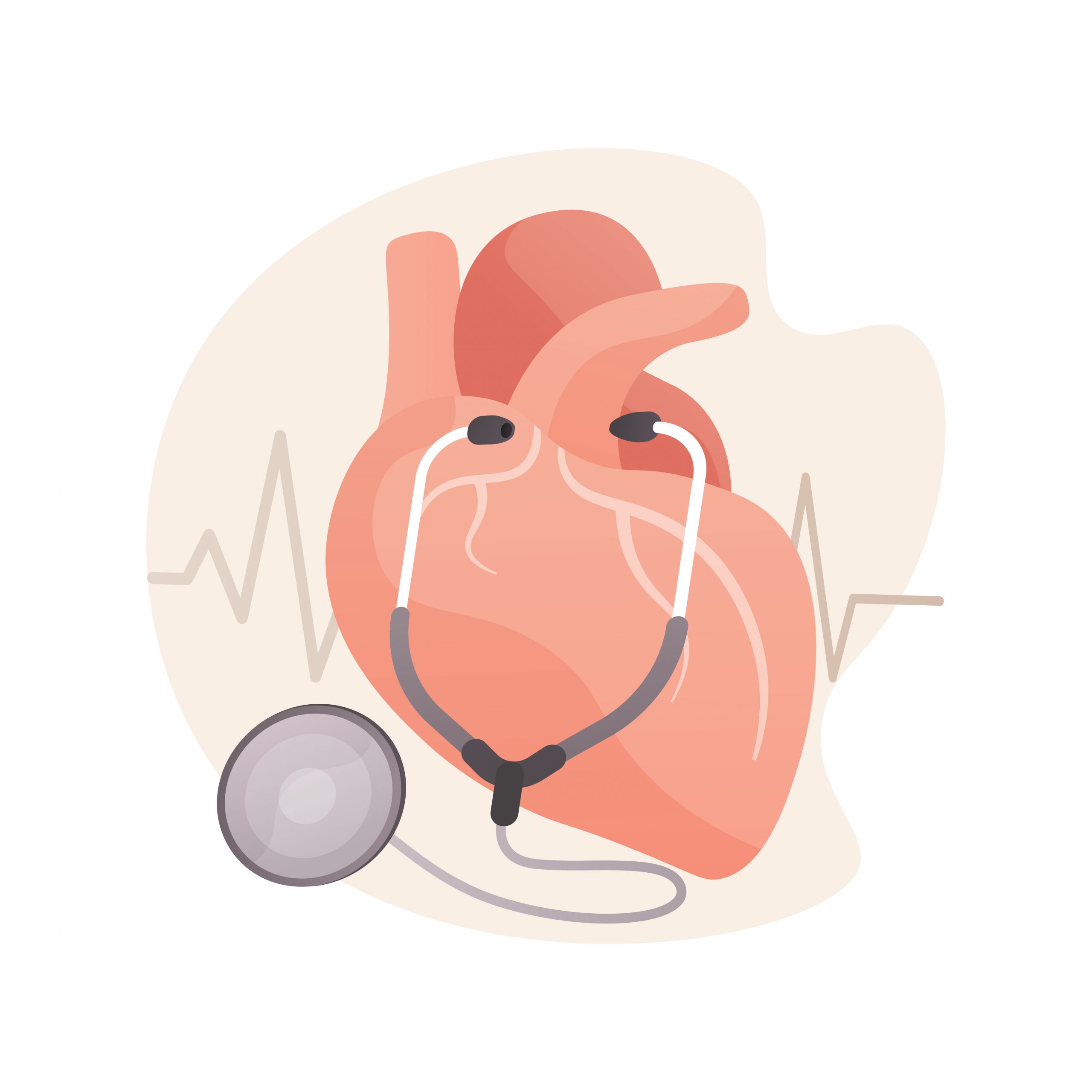

Every year, almost 700,000 people in the United States die from heart disease, with complications in the initial weeks or months following a catastrophic heart-related incident accounting for one-third of those deaths. Researchers at Northwestern and George Washington (GW) universities have developed a cardiac device monitor to treat cardiac disease and malfunction in the days, weeks, or months following such incidents in order to help prevent such deaths. When the gadget is no longer needed, it degrades harmlessly inside the body, eliminating the need for extraction. The findings were reported in the journal Science Advances.
The soft, flexible cardiac device, about the size of a postage stamp, combines an array of sensors and actuators to perform more complex investigations than existing devices, such as pacemakers, can. Not only can it be placed on different regions of the heart, but it also continuously sends data to physicians, allowing them to remotely monitor a patient’s heart in real-time. The device is also incredibly transparent, allowing physicians to examine specific cardiac areas in order to diagnose or treat patients.
“Several serious complications, including atrial fibrillation and heart block, can follow cardiac surgeries or catheter-based therapies,” said Northwestern’s Igor Efimov, an experimental cardiologist who co-led the study.
“Current post-surgical monitoring and treatment of these complications require more sophisticated technology than currently available. We hope our new cardiac device can close this gap in technology. Our transient electronic device can map electrical activity from numerous locations on the atria and then deliver electrical stimuli from many locations to stop atrial fibrillation as soon as it starts.”
“Many deaths that occur following heart surgery or a heart attack could be prevented if doctors had better tools to monitor and treat patients in the delicate weeks and months after these events take place,” added GW’s Luyao Lu, who co-led the work with Efimov. “The tool developed in our work has great potential to address unmet needs in many programs of fundamental and translational cardiac research.”
Efimov is a biomedical engineering professor at Northwestern’s McCormick School of Engineering and a physician at Northwestern’s Feinberg School of Medicine. Lu is a biomedical engineering assistant professor at GW.
This research expands on Efimov’s past work on cardiac implants that monitor and temporarily pace the heart. Efimov and Northwestern professor John A. Rogers published the first transient pacemaker in Nature Biomedical Engineering in 2021. Then, earlier this year, Efimov’s team published in Advanced Materials a graphene “tattoo” for treating cardiac arrhythmia.
“After heart surgeries, surgeons sometimes insert temporary wires, which are connected to external current generators, to provide electrical stimulation during temporary heart block caused by the surgery,” Efimov said. “Recently, we developed a bioresorbable pacemaker to replace such a wire. Post-operative atrial fibrillation requires a more complicated approach based on a multi-electrode array for sensing and stopping atrial fibrillation. Now, we present a novel technology to achieve this goal.”
The novel gadget, which has been tested in small animal models, has functions that go beyond those of a regular pacemaker. A pacemaker can only provide one general view of the heart (whether or not it is beating), whereas the transitory device can provide a more detailed picture. Not only can it restore regular cardiac rhythms, but it can also identify which regions of the heart are working properly and which are not. Because the cardiac device is transparent, researchers may optically map several essential cardiac physical parameters through it to better understand heart function and heart disease processes.
The device, which is composed of biocompatible materials authorized by the US Food and Drug Administration, simply dissolves after a therapeutically relevant duration. The cardiac device, like absorbable stitches, dissolves and finally disappears through the body’s natural biological processes. The bioresorbable feature of the device could save healthcare expenditures and enhance patient outcomes by eliminating surgical extraction problems and minimizing infection risks.
more recommended stories
 Phage Therapy Study Reveals RNA-Based Infection Control
Phage Therapy Study Reveals RNA-Based Infection ControlKey Takeaways (Quick Summary) Researchers uncovered.
 Safer Allogeneic Stem Cell Transplants with Treg Therapy
Safer Allogeneic Stem Cell Transplants with Treg TherapyA new preclinical study from the.
 AI in Emergency Medicine and Clinician Decision Accuracy
AI in Emergency Medicine and Clinician Decision AccuracyEmergency teams rely on rapid, accurate.
 Innovative AI Boosts Epilepsy Seizure Prediction by 44%
Innovative AI Boosts Epilepsy Seizure Prediction by 44%Transforming Seizure Prediction in Epilepsy Seizure.
 Hypnosis Boosts NIV Tolerance in Respiratory Failure
Hypnosis Boosts NIV Tolerance in Respiratory FailureA New Approach: Hypnosis Improves NIV.
 Bee-Sting Microneedle Patch for Painless Drug Delivery
Bee-Sting Microneedle Patch for Painless Drug DeliveryMicroneedle Patch: A Pain-Free Alternative for.
 AI Reshapes Anticoagulation in Atrial Fibrillation Care
AI Reshapes Anticoagulation in Atrial Fibrillation CareUnderstanding the Challenge of Atrial Fibrillation.
 Hemoglobin as Brain Antioxidant in Neurodegenerative Disease
Hemoglobin as Brain Antioxidant in Neurodegenerative DiseaseUncovering the Brain’s Own Defense Against.
 Global Data Resource for Progressive MS Research (Multiple Sclerosis)
Global Data Resource for Progressive MS Research (Multiple Sclerosis)The International Progressive MS Alliance has.
 AI Diabetes Risk Detection: Early T2D Prediction
AI Diabetes Risk Detection: Early T2D PredictionA new frontier in early diabetes.

Leave a Comment